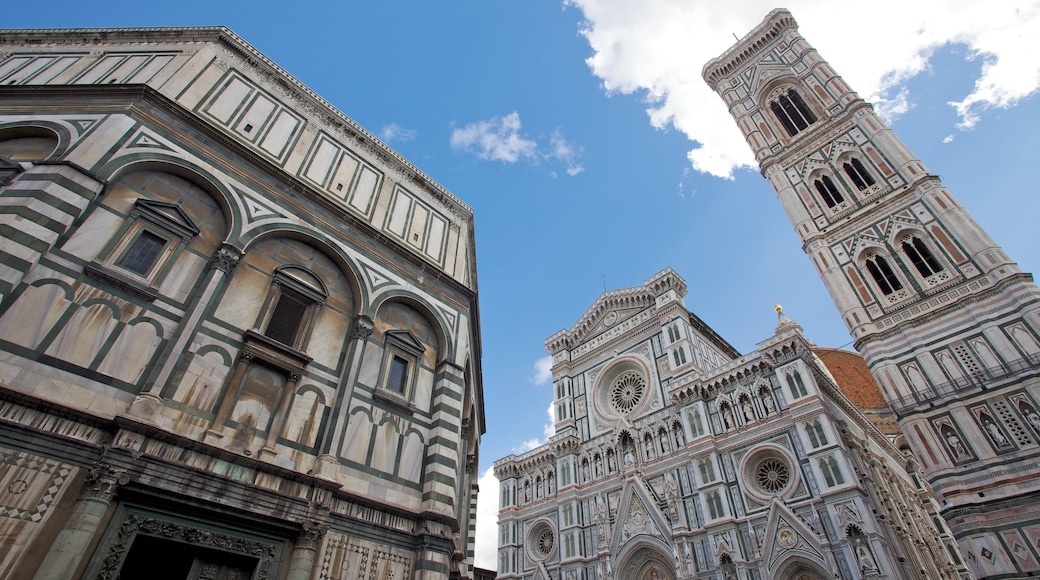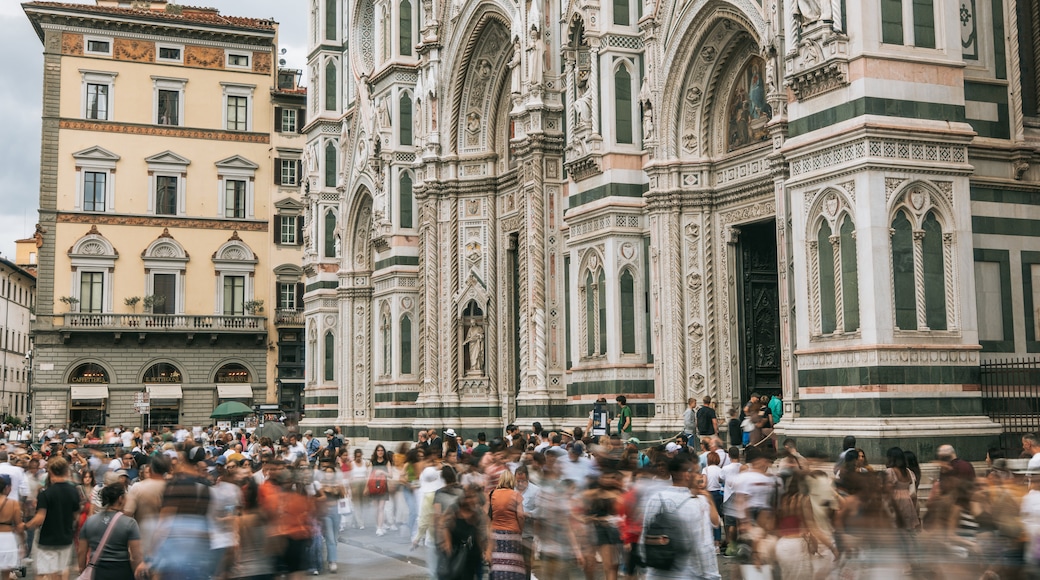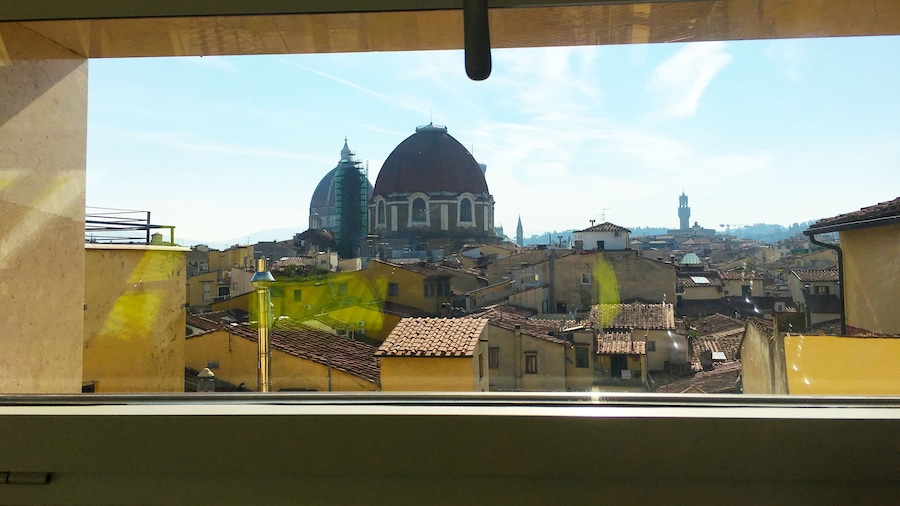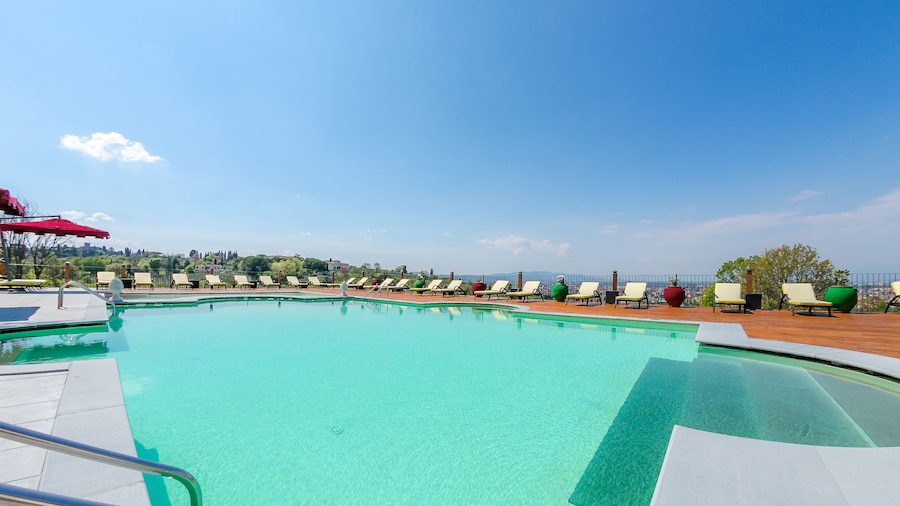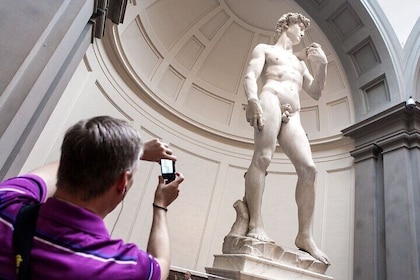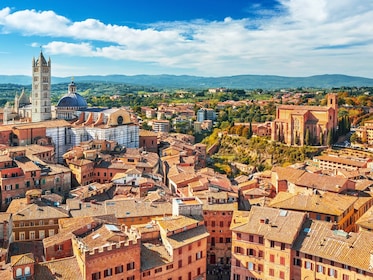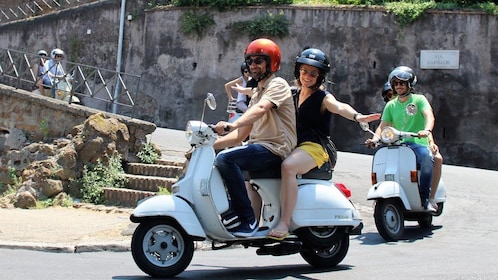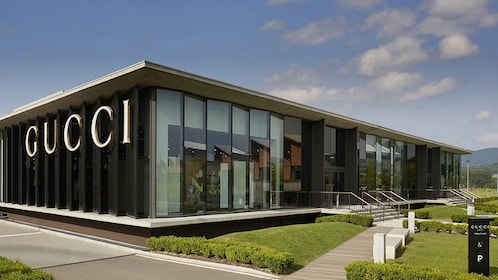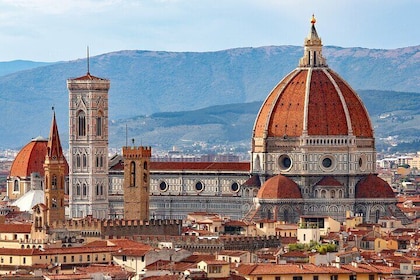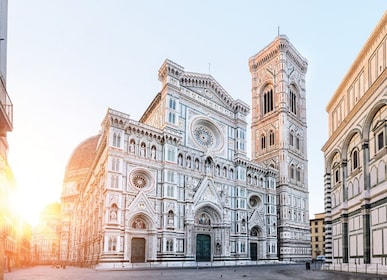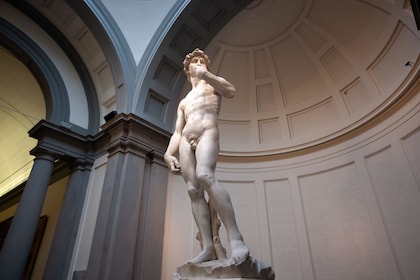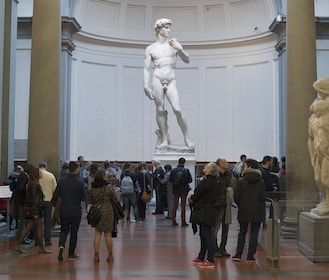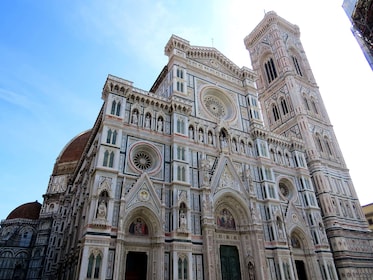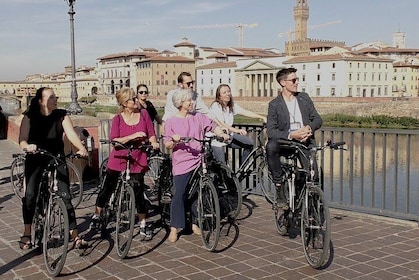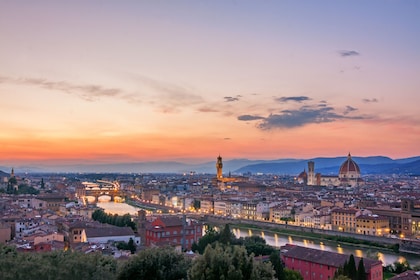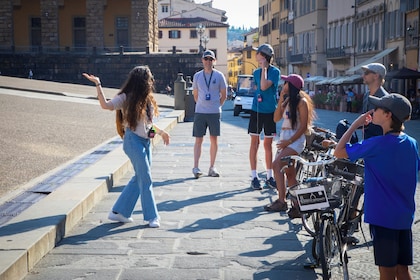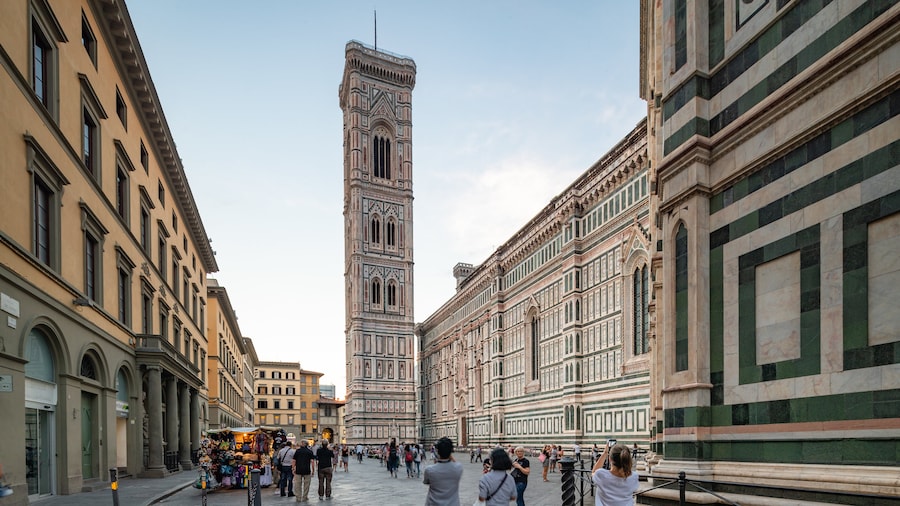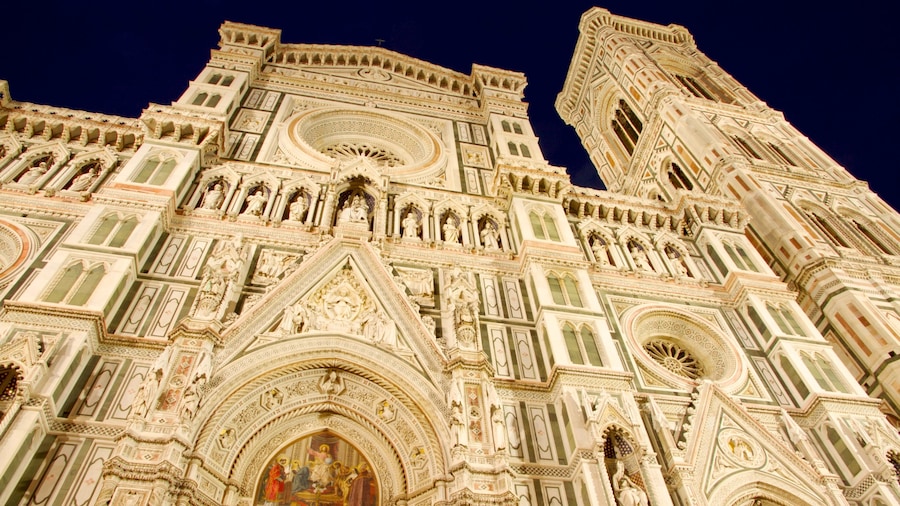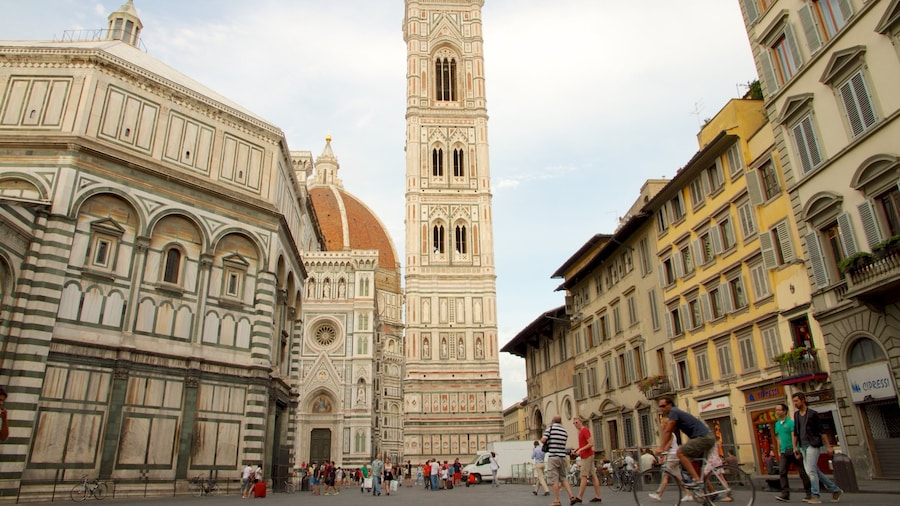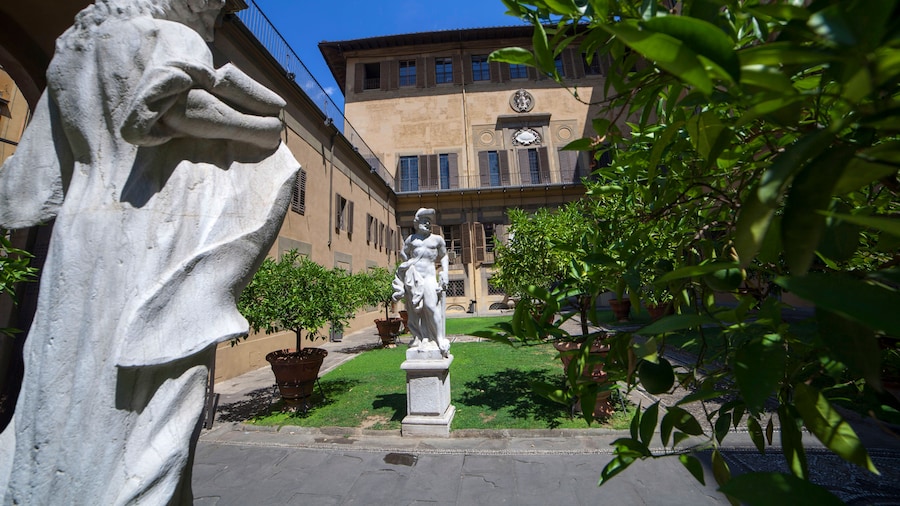The “Saint Mary of the Flower” cathedral and its towering dome have come to symbolise Florence.
The Cathedral of Santa Maria del Fiore is also known as the Duomo, which is an Italian term for cathedral. Dominating the Florence skyline is the Duomo’s magnificent dome, considered by many to be the most important architectural achievement of the Renaissance. Inside the cathedral, you’ll find stained-glass windows and frescoes by Italian masters, and one of the oldest examples of an hora italica clock in the world. For many, the most impressive part of a visit is a close-up view of the building itself.
Plans for the cathedral were first drawn up in 1294 by the architect Arnolfo di Cambio and construction started two years later. The building was consecrated in 1436, following contributions from several different architects. Arguably the most significant was Filippo Brunelleschi, who designed the dome. At 149 feet (45.5 meters) in diameter, it was the largest structure of its kind anywhere in the world, and remains the largest brick and mortar dome in the world today. Climb the 463 steps (there’s no lift) of the dome for a superb panorama of the city. There is a fee to visit the dome.
Join the crowds in the Piazza del Duomo and pause to take in the cathedral’s impressive exterior. The pink, white and green marble of the façade was actually a late addition to the cathedral and completed in the late 1800s.
The 44 stained-glass windows depicting scenes from the Old and New Testaments are among the highlights inside the cathedral. Don’t miss the giant clock above the entrance on the inside of the church. Designed in 1443, this clock is one of the last working examples of an hora italica timepiece, a 24-hour clock on which the last hour falls at sunset.
Santa Maria del Fiore is open daily, except for January 6 (Epiphany). Entry is free. While the lines to enter can be long, they generally move fast. If you are traveling in a group of more than four you may be required to take an audio or radio guide.
